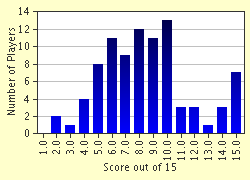Quiz Answer Key and Fun Facts
1. Peranakans are descendants of interracial marriages between immigrant Chinese men and local Malay women in Malaysia, Singapore and Indonesia.
True or False:Once a Peranakan girl turns 12, her life of freedom ended and she would be barred from leaving the house.
2. When is the only time unmarried girls were allowed to venture outdoors?
3. What is the attire of the Nonyas (young female Peranakans) and Bibiks (older female Peranakans)?
4. What is the Baba's (male Peranakans) attire known as?
5. An activity enjoyed by the Nonyas and Bibiks is the the habit of sireh-chewing, which stains their lips and teeth red. What is sireh?
6. I am a card game played with a deck of 60 cards each measuring about 60mm X 24mm, with three suits and nine numerals for each suit. The game is quite similar to gin rummy. My name is _____
7. Peranakans are a superstitious lot. Which of these superstitions do the Peranakans believe in?
8. At times, when illness struck, a Chinese medium would be consulted. Prescription was in the form of a 'hoo'. 'What is that?' you may ask.
9. The architectural style of the Peranakan homes are actually a combination of European, Chinese and Malay influences. What is this architectural style classed as?
10. Which century is considered to be the golden age of the Peranakans in Malacca, Singapore, Penang and Indonesia?
11. Any Nonya worth her salt would be skilled in what activities?
12. Dondang sayang refers to the composing and singing of pantun. What is pantun?
13. What is the ronggeng and joget?
14. In Peranakan plays or bangsawan, male actors play female characters as well.
15. The Peranakans regard which festival as the most important?
Source: Author
meifeng
This quiz was reviewed by FunTrivia editor
trident before going online.
Any errors found in FunTrivia content are routinely corrected through our feedback system.

